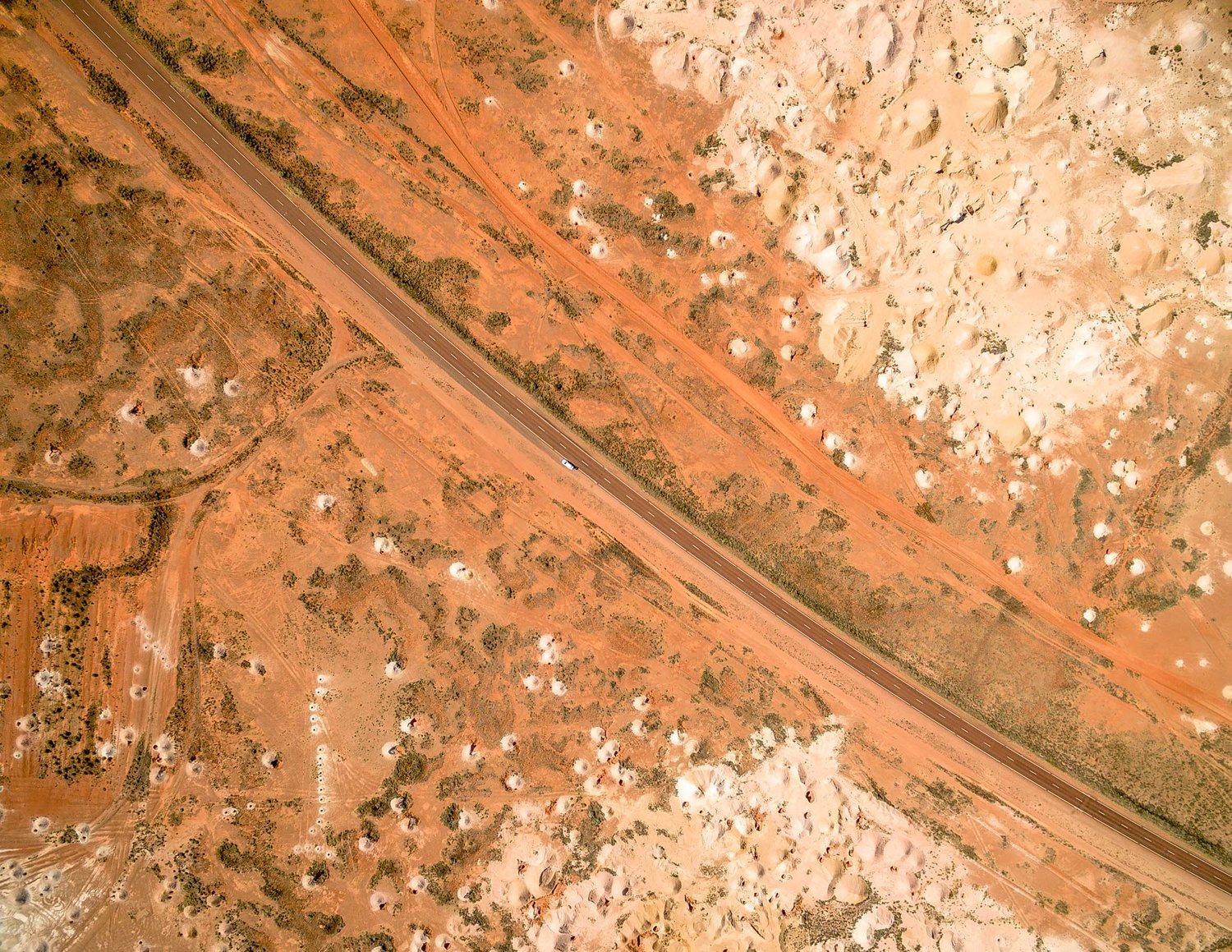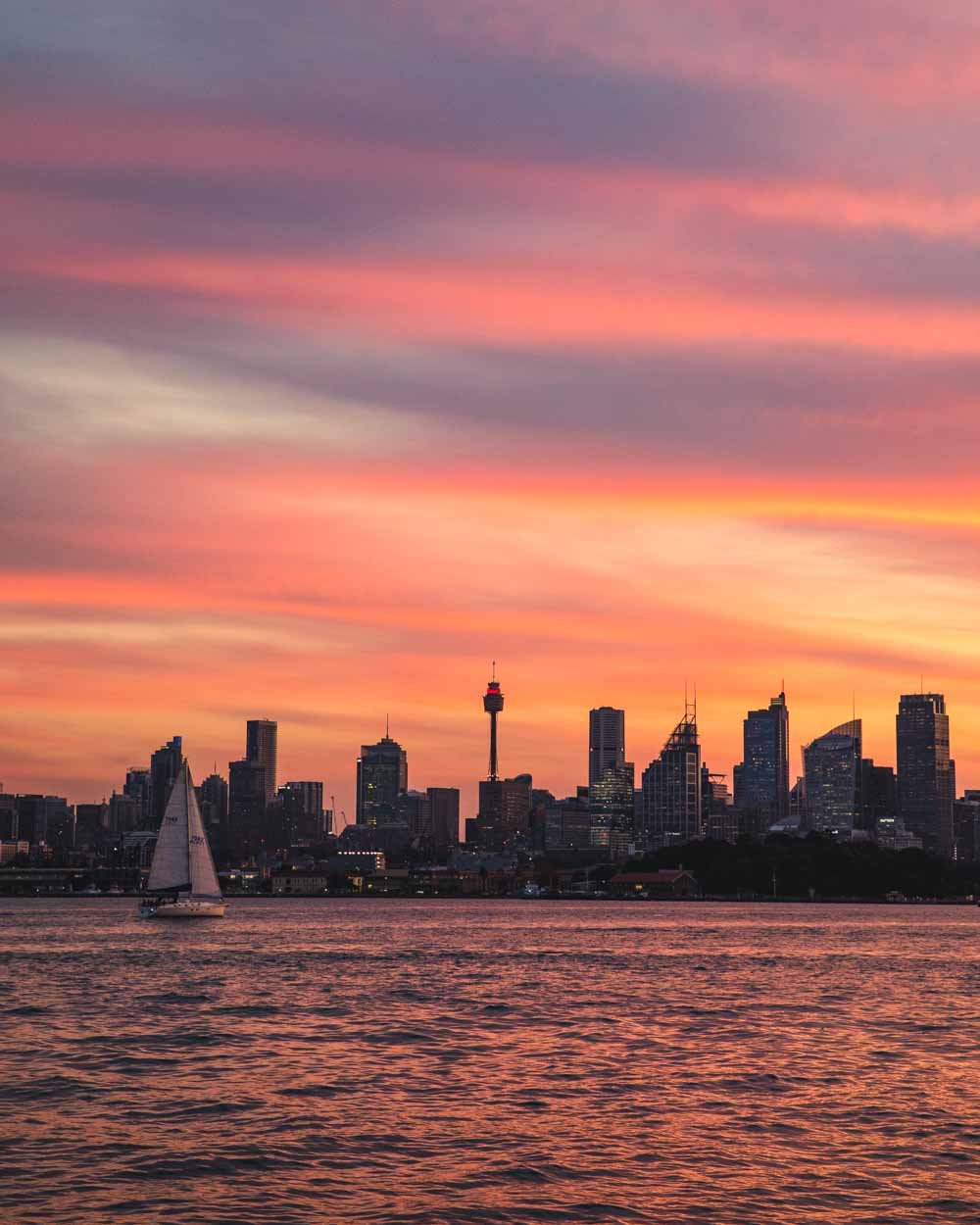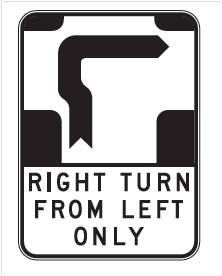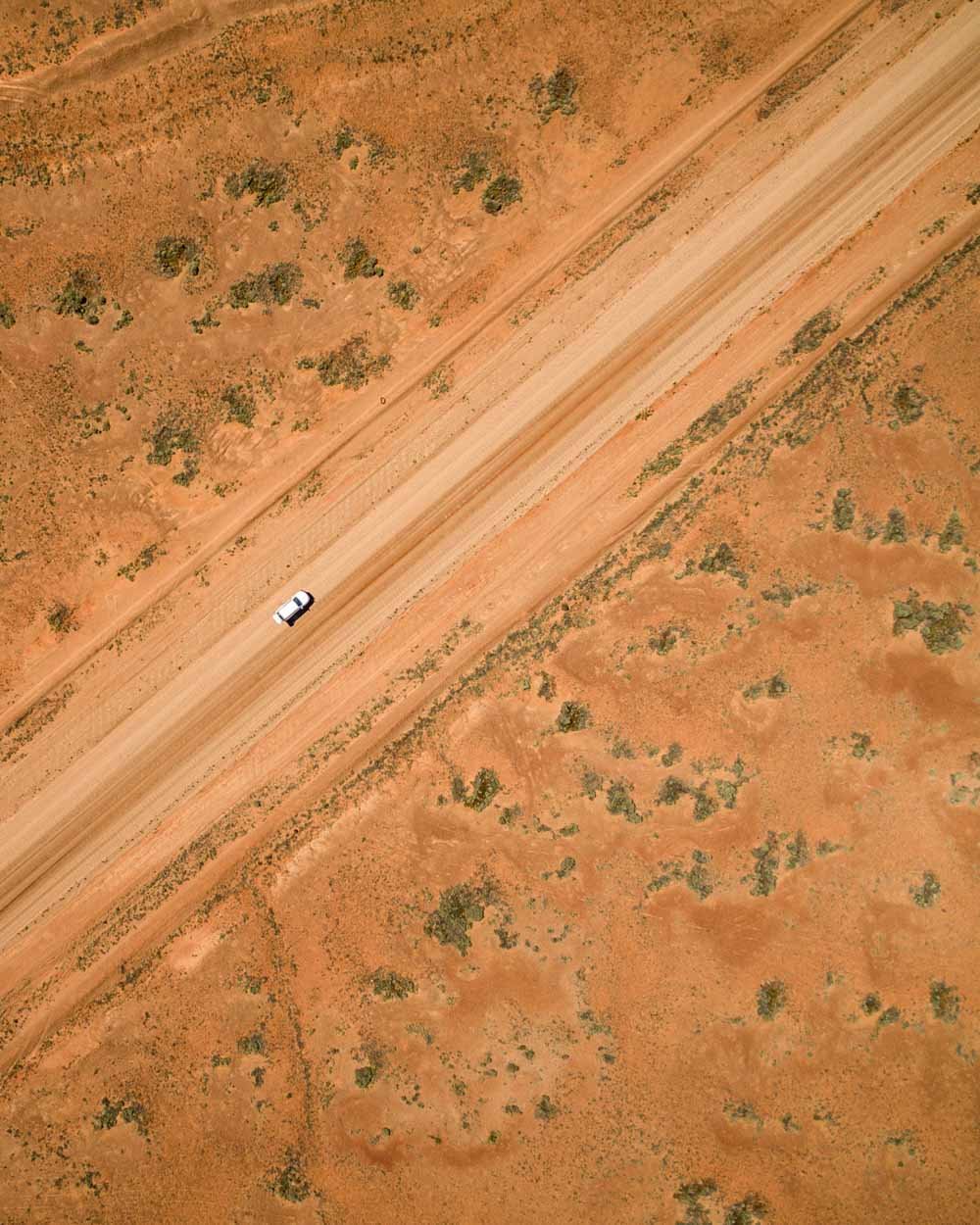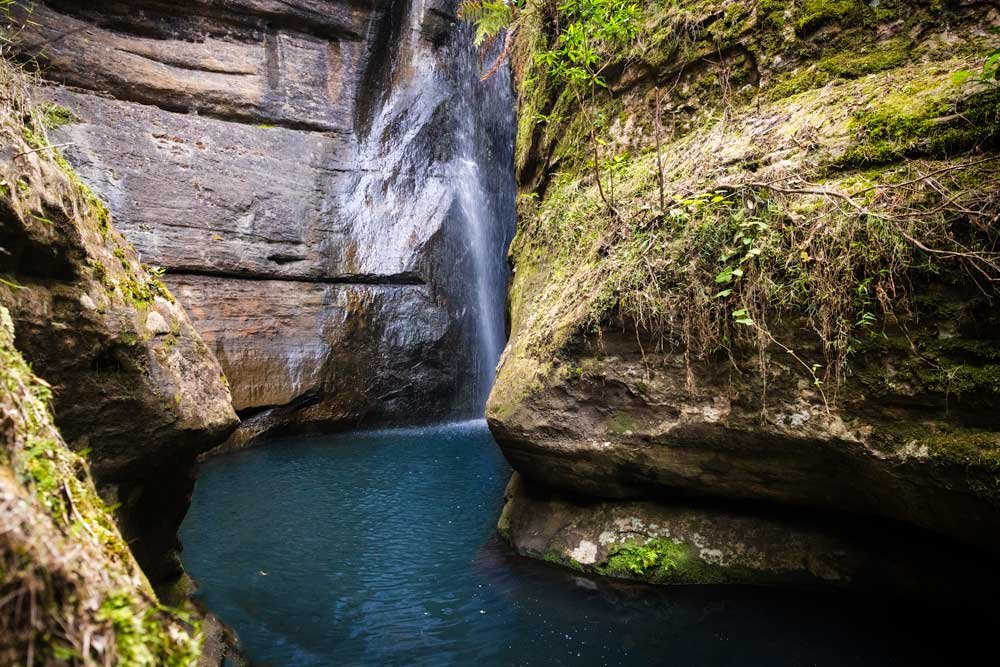A road trip in Australia is the perfect way to see this vast country, and you’ll be wowed by breathtaking scenery and plenty of wildlife. Hiring a car is not just ideal for those famous road trips such as the Great Ocean Road and the East Coast, but can also make your life a lot easier if you plan on venturing outside the cities. As Brits emigrating here, we quickly realised that like the USA, this country was built for driving, and relying solely on public transport can be difficult.
For a tourist, driving in Australia can seem scary, especially for those who are used to driving on the right side of the road. Whilst it can be confusing at times, don’t let that put you off.
This guide contains all our best insider tips for hiring a car, navigating the roads, parking, and everything else you need to know before driving down under.
Should you hire a car in Australia?
Is it easy to drive in Australia?
Driving in Australia is easy, especially outside of the cities. The roads here are generally very quiet and in good condition. Once you have got your head around the fact that Australians drive on the left, the rest becomes pretty easy.
Driving in the busier cities such as Melbourne and Sydney can be trickier, but they are still significantly quieter and easier than cities such as London and Los Angeles (we find ourselves chuckling whenever we hear Sydneysiders complaining about the painful traffic having lived in London for years).
Public transport is only good if you stay in the city centres
Public transport in cities like Sydney and Melbourne is surprisingly good, and is preferable due to the lack of affordable parking options. In Melbourne, the tram system is free within the CBD, and frequent enough to make it the most convenient way to get around.
Similarly, Sydney has a really good ferry and train network, that is pretty regular and cheap (especially compared to European cities). Taking a ferry ride on Sydney Harbour should be high on every visitor’s list. If you are planning a city break, then it’s probably not worth hiring a car.
However, it’s when you try to get out of the CBD that things become slow and tedious, especially when you realise that even getting to places like Bondi Beach requires a 30 minute bus journey (it’s only 9km away) and that’s without traffic!
Hiring a car in Australia
Researching rental cars
It’s well worth putting in the research when hiring a car in Australia, as the prices can differ wildly - especially when visiting places such as the Northern Territory. We use RentalCars.com as not only does it compare a lot of different companies prices, but it’s pretty clear up front on things such as insurance policy, milage and any other costs you can expect.
As you can see below, they clearly label “free cancellation” and unlimited mileage - both of which we like to see when renting a car! You don’t want a mileage cap if you can avoid it because distances in Australia are massive and each extra kilometre you drive above the limit is pricey.
Indicative costs for a rental
The cost of a rental can differ dramatically depending on the location and time of year. At time of writing, hiring in Tasmania is pretty expensive all year round (this is due to the lack of supply as a lot of companies sold their fleet during the pandemic).
We’ve regularly seen prices in excess of $200 AUD per day for a small car in Tassie. Similarly, hiring in outback towns such as Alice Springs, Uluru or Coober Pedy can also be pricey, and this was the case long before the pandemic.
It’s worth knowing that you can often snag a bargain in the major cities, and we’ve hired for as low as $20AUD per day. It can be more cost effective to hire a car with unlimited kilometres and drive everywhere, rather than flying between places and hiring a new car; just make sure you check how long the drives are as Australia is HUGE.
You also need to rent a car that allows you to change state and not all do.
Automatic cars are the norm
The good news for Americans is that the vast majority of cars in Australia are automatic, so you won’t have a problem trying to find one.
You can get manual cars if you want, but it’s unlikely to save you money like it does in many other countries.
Insurance
The majority of car rental companies will offer the insurance you need, but the big thing to check is their insurance excess policy. The excesses in Australia are often in the thousands, and the excess reduction policies that rental companies offer can be almost as costly as the price of the rental.
It is worth getting your own excess insurance reduction policy before you arrive, and many travel insurance policies will include this if you look - just make sure you check the level of the coverage they offer.
We’ve regularly used RentalCover.com as it cost us about $4AUD per day to make our liability zero, which means you can have peace of mind while travelling.
Included kilometres per day
Having unlimited mileage for your car is pretty important when hiring a car in Australia, as the distances are massive.
Whilst this is easy enough to find in the cities, there’s one place where unlimited mileage is an incredibly rare phenomenon: the Northern Territory.
Almost every hire company here will offer a set amount of kilometres per rental (typically it’s 100km’s per day and 30c per additional kilometre), and this becomes a problem as you will inevitably go over this if you plan on seeing all the top attractions.
It’s worth checking the distances you anticipate driving and taking this into consideration when totting up the cost of the rental.
Tolls roads
Australia has a lot of tolls, but they are found within the cities. Sydney is one of the most tolled cities in the world, and they can rack up really quickly.
Unless you’re willing to take a long time navigating the back roads, a journey from the CBD to the Blue Mountains via the highways can cost over $20AUD in tolls each way.
What makes this more painful is that many rental companies are now introducing an admin fee per day for toll usage (one even quoted an admin fee per toll charge!).
Hire cars will have a tag inside the car which automatically logs the tolls you go through and you’ll receive a bill after you’ve dropped the car back.
Check their policy on tolls before you rent, ideally you want to find one that only charges the admin fee once overall for your entire rental period.
Unsealed roads
You’re never too far from an unsealed road in Australia, and even some tourist attractions are only accessible via a gravel or dirt road, especially in Alice Springs, Kakadu and even the Blue Mountains.
A lot are in brilliant condition, but rental car companies will not allow you to take your car on any of them unless stated beforehand, and doing so will void your insurance.
You can chance it, as sometimes the gravel roads are short and in great condition. But if you want to visit places such as the Glow Worm Tunnel in Lithgow, then this is a big risk in a rental car.
If you are planning on visiting some of the more adventurous places, then check about the unsealed road policy before hiring.
The Northern Territory in particular has a vast number of incredible places that are down unsealed roads, including some of the very famous ones.
Exclusion areas
This won’t apply to most people, but some car hire companies will have exclusion zones which you can’t take your car to. Some won’t allow you take your car outside of the state you hire in, so if you are planning an interstate trip, check with your rental company before you hire.
Similarly, many car rental companies won’t allow you to take a vehicle from Adelaide to Kangaroo Island (some will and alternatively you can hire a car on the island).
Don’t hire a GPS, download Google Maps
Google Maps can save maps to your phone, allowing you to do route guidance completely offline - very important in Australia as phone signal can be hard to find in the countryside.
On your phone click on the menu (it should be 3 horizontal lines in the search box) -> offline maps -> custom map -> select the area you want to visit and download.
This will save you money and alleviate the fear of getting lost. Not everywhere is on Google Maps, but it will enable you to get to most places. We found Google Maps to be generally accurate for all but the odd dirt road destination.
Things to know about driving in Australia
Many Aussies say that the country has become a Nanny State, and whilst I often disagree, after thinking about it for this article I began to change my mind! As a Brit, a lot of this wasn’t obvious until living in Australia.
1. Australians drive on the left
A nice easy one to start off with, but Australians drive on the left hand side of the road. Great for Brits and New Zealanders, but takes some getting used to for the rest of the world!
2. The risk of hitting kangaroos and wildlife is low, but not zero
One of the most common misconceptions about Australia is that kangaroos are everywhere. Whilst there are more kangaroos than people, they aren’t always easy to find (especially in places such as Sydney).
In our 10 years of driving all over Australia, we never hit a kangaroo or any other wildlife. You always need to be mindful though, especially at night.
Roos are more active after dark, so slow down and look to the sides of the roads for any animal that may think about hopping out. Drive well below the speed limit at night if you’re on country roads.
3. The fines here are extortionate
One of the biggest surprises about driving in Australia is the fines. They are really high, into the hundreds of dollars depending on what you’re caught for. I got fined $350AUD for not stopping long enough at a stop sign in Coffs Harbour, and you will see similar fines for speeding.
There are a lot of speed cameras and police waiting to catch you for any infringement, so we suggest staying well within the speed limit and being on your best behaviour at all times.
It’s worth noting that toll roads have a lot of speed cameras, so if you don’t adhere to variable speed limit signs, you’ll find yourself paying the toll charge and a speeding fine!
4. Parking in cities like Sydney is expensive, confusing and scarce
Following on from Australia’s love of a fee, parking in the major cities can be a painful experience. The first thing to understand is that the multi-storey car parks in the CBDs are the most expensive - I’ve seen some charge $20-30AUD per hour!
Even street parking can be costly, with places such as Manly and the Northern Beaches charging $43AUD for a day’s parking, or $9 per hour. The further out of the CBD you go, the more free parking you’ll find, but even so it can still be scarce and often have short time limits.
The other thing to get your head around is translating the parking signs. P stands for hours (4P = 4 hour limit) and most places will have specific hours and days. If you have to pay, it will state “ticket”, but otherwise it is free for the time stated.
5. You have to park in the correct direction
This is probably for the Brits, but in Australia you have to park in the right direction: ie you can’t park facing the traffic. This came as a surprise, as in the UK I was used to parking in any direction I pleased! This isn’t always stated on the signs, but is a known rule of the road, so when parking follow what everyone else is doing!
This can go further, as some street parking will stipulate that you either have to reverse into the kerb or park at 45 degree angle. These instructions will be written on the signs.
6. The Hook Turn - Melbourne
Melbourne is home to the “hook turn”, a road layout which nowhere else in the world has adopted and for good reason. The hook turn is a layout at a crossroad, where cars turning right have to pull up to a line in the left lane…. Yes, you have to go into the left lane to turn right.
Then, when it is clear, or you’re instructed to do so, you can turn across all lanes to the road you wanted to go to. The first time trying this manoeuvre is pretty scary, you feel you’ll either drive head on into oncoming traffic, or wait so long that the traffic from the other direction will plough into you!
I’ve been told by Melbournians that it’s pretty easy once you get used to it, but I never did….
6. Pedestrians can cross on green
Maybe this one is common elsewhere in the world, but some traffic lights can instruct pedestrians to cross the road on a green light! As a driver, this can be pretty dangerous as you can see a green light and begin to drive thinking you are clear to go.
This is a pretty common feature in Australia, and I tended to find it happen a lot more when you try to turn left at a traffic light, so keep your eyes open and wait for pedestrians to cross.
7. But cars can’t turn left on red (unless it’s stated)
This is for the Americans, but you can’t turn left on a red light unless there’s a sign stating you can. You will see a filter lane for the majority of instances you can turn left on a red light.
8. You can go for hours without phone signal
This is for anyone planning to drive outside of the cities, but you can go for hours on a road trip without any phone signal. This is very common when doing a road trip in the Northern Territory, which is sparsely populated, but there are large patches of the eastern states which are also blackspots.
If you plan on going to rural areas, we’d recommend getting a Telstra sim card. Telstra have the most extensive coverage of all the mobile networks, and pride themselves on having the best signal in rural areas.
9. Stock up if you plan on doing a long road trip
Following the point above, stock up on the essentials and emergency supplies if you plan on doing a long road trip through the outback or a rural area. This means plenty of food and a lot of water just in case you break down.
If you do break down, stay in your car and wait. Aussie drivers are some of the most considerate in the world when it comes to rural areas, as they know how deadly breaking down can be. We’ve found that even when we stop to check for directions, they will instinctively stop and check to see if we are ok.
10. Petrol prices change daily
This is a quirky one, but petrol prices change daily in Australia, peaking at weekends and usually dropping on a Tuesday/Wednesday. Planning when to fill up your car can save you money.
Where to rent a car
We always use rentalcars.com when we book car hire abroad as it shows prices from all the major car hire companies (and a few we’d never heard of). It usually includes collision insurance, third party liability and theft protection.
You can get a quote below.
This post may contain affiliate links, meaning at no additional cost to you, that we will earn a small commission if you click through and decide to make a purchase. This helps towards the costs of running our website. Thanks for your support.
